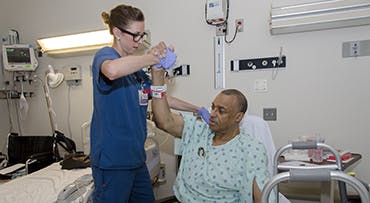Bunion Surgery
What is a Bunion
Contrary to popular belief, bunions are often complex deformities that stem from joint issues deep in the foot. The root cause of a bunion is an unstable joint at the base or foundation of the metatarsal bone.
In a normal foot, the metatarsal bone is aligned with the other bones, and a stable joint at its base keeps it that way. With an unbalanced toe, the bone leans out of alignment and creates the trademark bunion deformity — a bump on the side of the foot at the base of the big toe.
Bunion Treatments
Most bunion treatments only address the top part of the metatarsal and ignore the real problem: the unstable joint. A common misconception is that a bunion is simply an overgrowth of bone that can be “shaved off.” In reality, bunions are a three-dimensional problem. They occur when an unstable joint allows the metatarsal bone to drift out of alignment, causing it to lean and rotate inward.
During an osteotomy, or traditional bunion surgery, the surgeon cuts and shifts the top part of the bone over, treating the bunion symptoms or bump. But with the unstable joint still at its foundation, the root cause of the bunion deformity is not addressed and, as a result, is prone to return. Foot and ankle experts estimate that for 87 percent of people with bunions, two-dimensional traditional bunion surgery fails to get to the true source of the problem.
Bunionectomy
For patients who are dealing with bunions, our podiatrists are taking on the three-dimensional problem by perform a revolutionary new type of bunion surgery called Lapiplasty®.
The new procedure transforms the treatment of painful bunions by correcting the root cause of the problem — a misaligned metatarsal bone–while dramatically shortening the time patients have to wait to bear weight on the affected foot. Using advanced instrumentation, the entire metatarsal bone is corrected in all three dimensions, restoring it to its proper alignment while naturally removing the bump and straightening the toe. The unstable joint is then fused with titanium plates, which permanently secures the correction in place.
Since the procedure uses advanced fixation technology, many patients are able to bear weight on their foot within days after surgery, providing an alternative to traditional bunionectomy, which can take up to six weeks. For the first few days, the foot is wrapped in bandages, followed by a surgical boot for walking. Lapiplasty® does not limit footwear choices or physical activity, and most patients can return to sports in about four months, once the bones have completely healed.








